Employee Feature: Helping ecosystems thrive takes the sting out of beekeeping for DLT’s James Harris
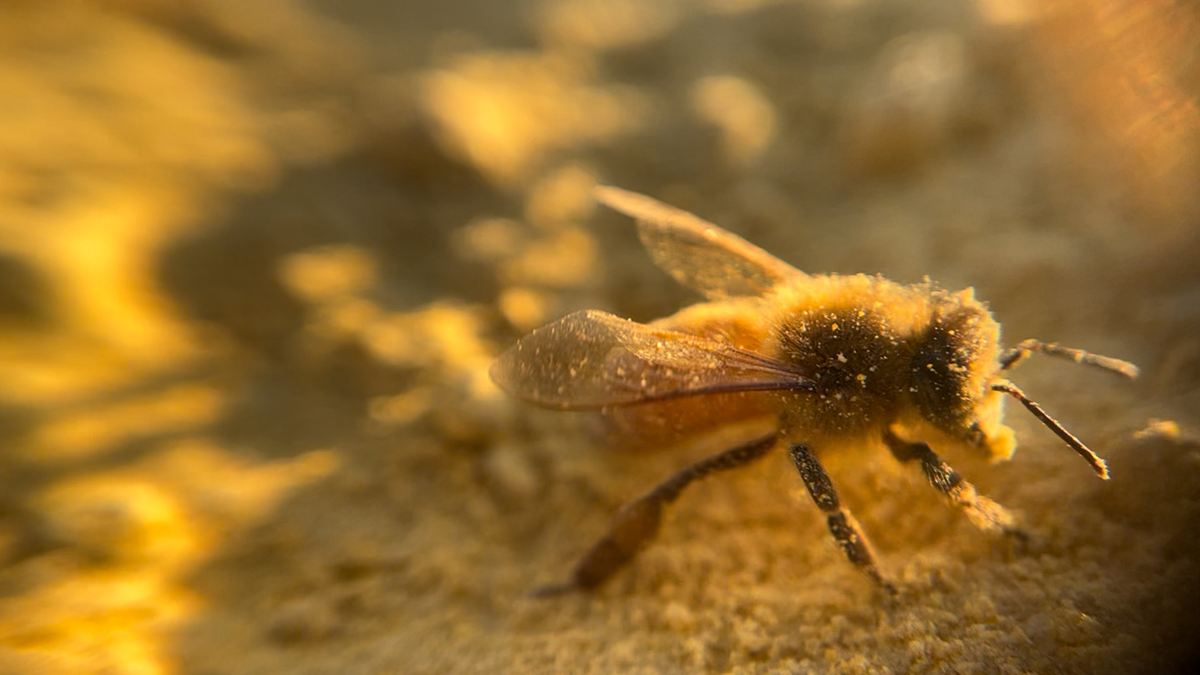
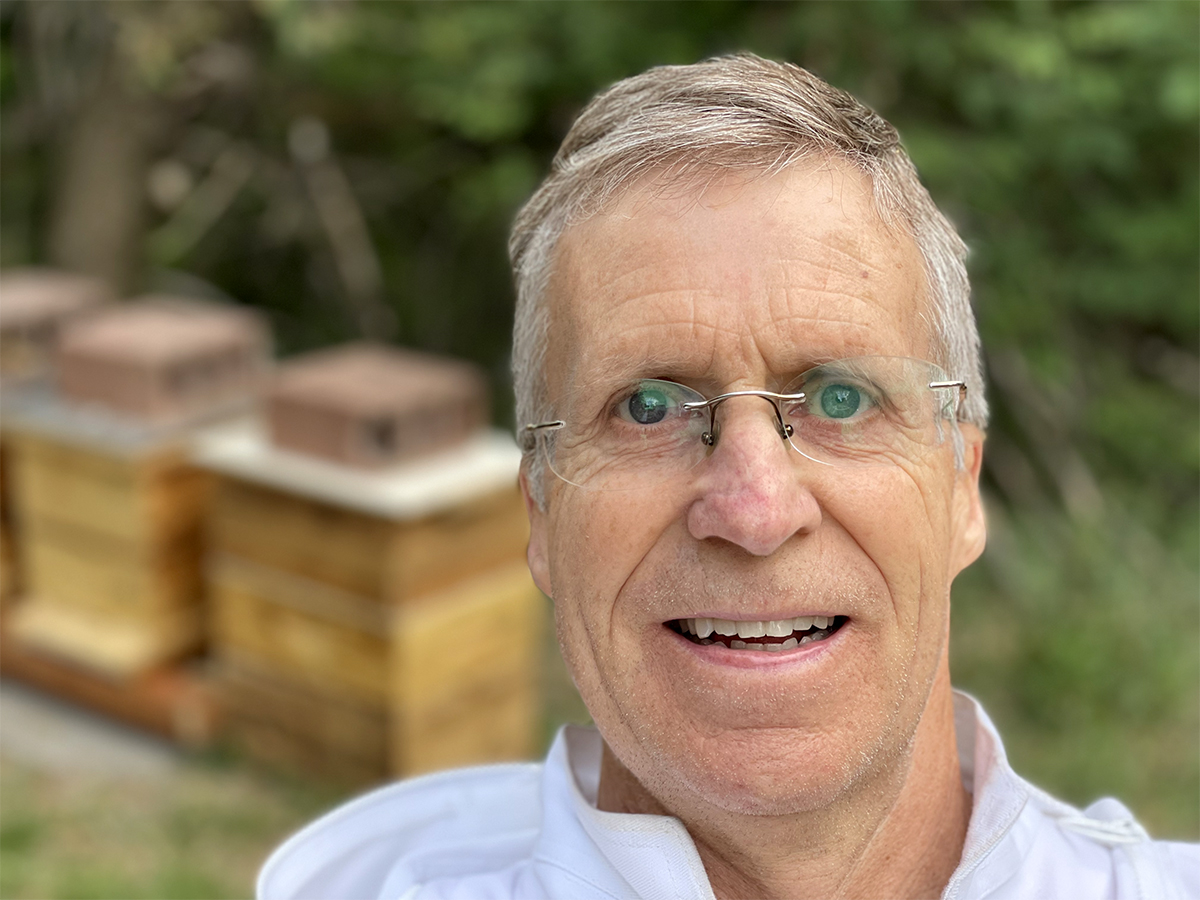
James Harris, shown here with some of his hives in the background, has been a beekeeeper since 2021.
What kind of person keeps bees?
People like Hippocrates, Emily Dickinson, and Beyoncé — beekeepers all. Sherlock Holmes, we’re told, retired to southeastern England and his own private apiary. “A hermit among your bees and your books,” Watson said.
Add James Harris to the list, too.
“Some people become beekeepers by reading books, or taking classes, but as the saying goes, ask 10 beekeepers for advice and you’ll get 10 different answers — and maybe an 11th because by the end of the conversation one of them will change their minds,” said Harris, associate director for Systems & Data Services in UIT Digital Learning Technologies. “I guess you could say my beekeeping journey has been more hands-on.”
Harris started backyard beekeeping in 2001, though not in his own backyard. A chance encounter at a hardware store with his former dentist led Harris to start raise honeybees. Harris currently splits 10 hives between two properties — a corner of his ex-dentist’s bee-friendly fruit orchard in Layton and an apiary in Willard.
A common starting point for new beekeepers, Harris ordered a 3-pound box of about 10,000 worker, nurse, forager, guard, and drone bees; a mated queen; and a sugar syrup container for feeding during transit.
Honeybees, Harris said, typically become active in spring as weather warms and plants flower, and they stay busy throughout the summer — “by May, they’re taking off, and by August, you potentially have honey.” Cooling temperatures in the fall, he explained, prompt honeybees to prepare for winter when their activity decreases to the point they’re rarely seen outside of their hives.
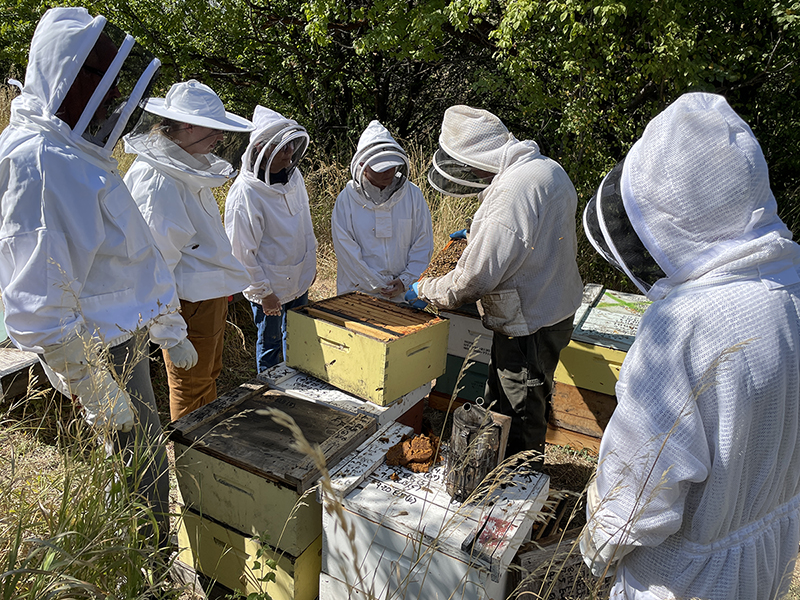
Harris teaches basic and intermediate beekeeping courses for U Continuing Education every spring and fall. A class excursion with attendees outfitted in protective gear is pictured above.
When honeybees emerge from winter, a beekeeper’s main job is to “brood them up,” Harris said. A brood is the developing stages of the hive’s future population — eggs, larvae, and pupae. “Brooding up” in late winter/early spring happens at a time the colony is “scraping for resources” — the queen resumes laying eggs and the colony starts raising young bees.
“As a beekeeper, I want to spur them on and stimulate the growth of the hives,” Harris said.
During hive inspections in spring, Harris places pollen patties, a gooey mixture of pollen and sugar water, inside the hives. The patties mimic the nectar they’d collect when their environments are in full bloom, providing “the carbohydrates and protein they need to build and grow.”
While beekeeping can be fascinating and rewarding, Harris admits “it isn’t for everyone.”
“It can seem like way too much work,” he said. “Then there comes a moment at the end of a long day after all the bees go back to hive, the sun sets, the temperature drops, you’re back in regular clothes, and there are millions of bees around you, but nothing is bothering you at all. You think, ‘Why do I do this? This is why.’”
Harris also does it because he “loves the outdoors. I care about society and the planet, and I want to have something that keeps me sane.”
“I sit at a desk all day. This gives me something to do in nature that’s engaging and meaningful,” Harris said. “Sure, I have to go out in the cold, and sometimes it’s no fun in the middle of the summer, but it’s something I really enjoy, and I’ve met some really cool people who do this.”
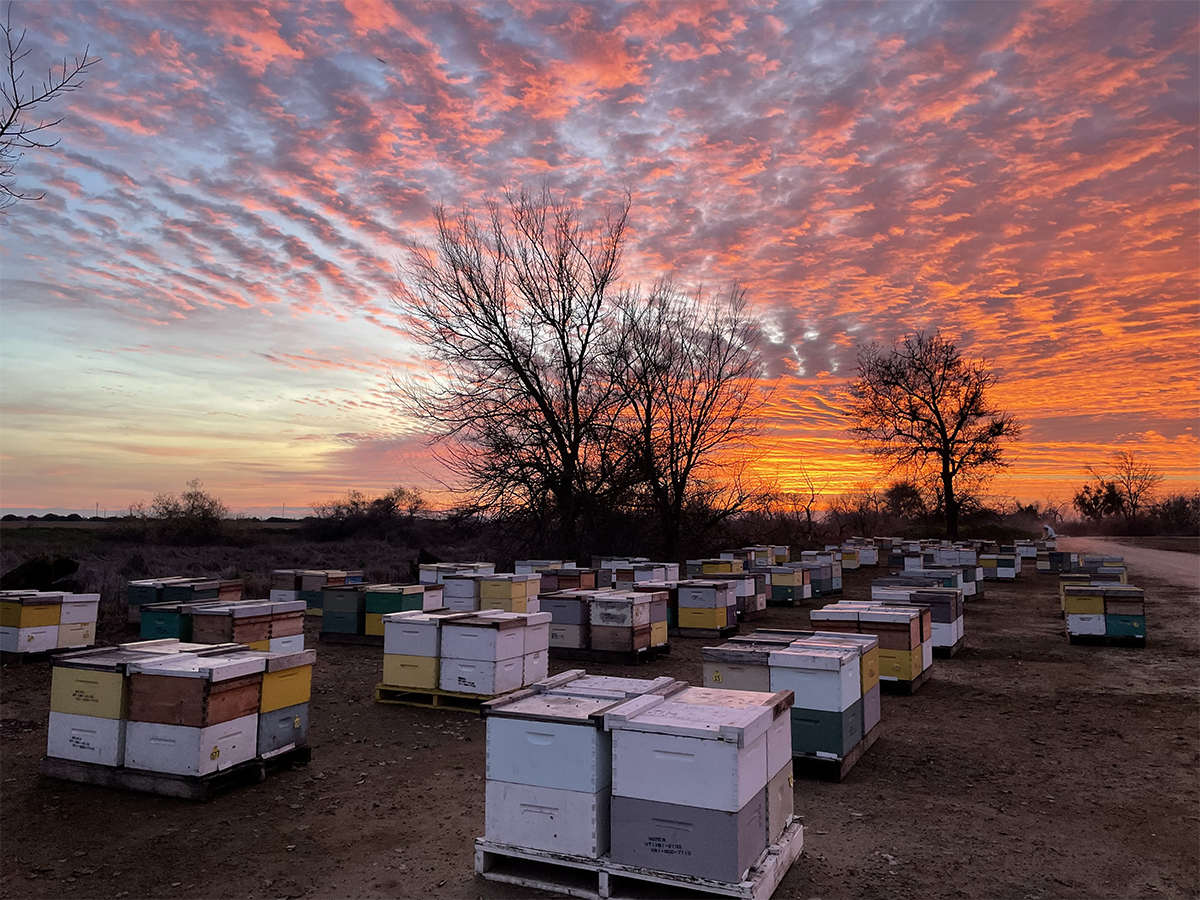
Foraging honeybees typically return to the hive before nightfall, driven by the declining sunlight and the need to find shelter and warmth. A bee farm Harris volunteered at is shown above as the sun sets.
It’s certainly a risk-versus-reward hobby. At best, beekeepers get through winter with healthy bees and enjoy a big haul of honey come harvest time. At worst, their hives get crowded and half the colony, including the queen, fly away to establish a new colony, (aka “swarming”); they’re decimated by varroa mites, which Harris calls “the biggest challenge for beekeepers”; or they just won’t stop stinging the hands that feed them.
“I’ve been stung more times than I care to remember, probably over 200 times,” Harris said. “You never quite get used to that.”
Every spring and fall, Harris teaches beekeeping classes for U Continuing Education — the spring class, currently underway, focuses on fundamentals; the fall class, which has yet to be scheduled, involves intermediate lessons on topics like “how to harvest honey, prepare for winter, and set yourself up for success for following year.”
Utah isn’t called the Beehive State for nothing. It has around 1,100 species of bees with southern Utah boasting as many species as the entire East Coastand the University of Utah’s status as a hotbed of bee activity.
The Xerces Society designated the U as a Bee Campus USA in 2020, recognizing student-led work to protect pollinator habitats. The 100-acre Red Butte Garden, meanwhile, contains 127 different bee species, according to a 2015-16 field study, and the U’s water and pollinator conservation garden at the College of Architecture + Planning was revamped in 2022 to increase food and shelter while bees, butterflies, and hummingbirds pollinate. Pollination is critical to biodiversity and food production. According to the Food and Agriculture Organization (FAO) of the United Nations, a third of the world’s food production depends on bees.
Though he enjoys photographing bees as they collect nectar, lick their forelegs, and lap up drops of sucrose they later convert into golden, delicious honey, he leans on other technical skills to become a better beekeeper. For example, QR codes attached to hives helps him track information about queens using Trello software.
“It’s great when we can apply technology to benefit our local ecosystems,” Harris said.
Below are photos Harris captured while beekeeping:
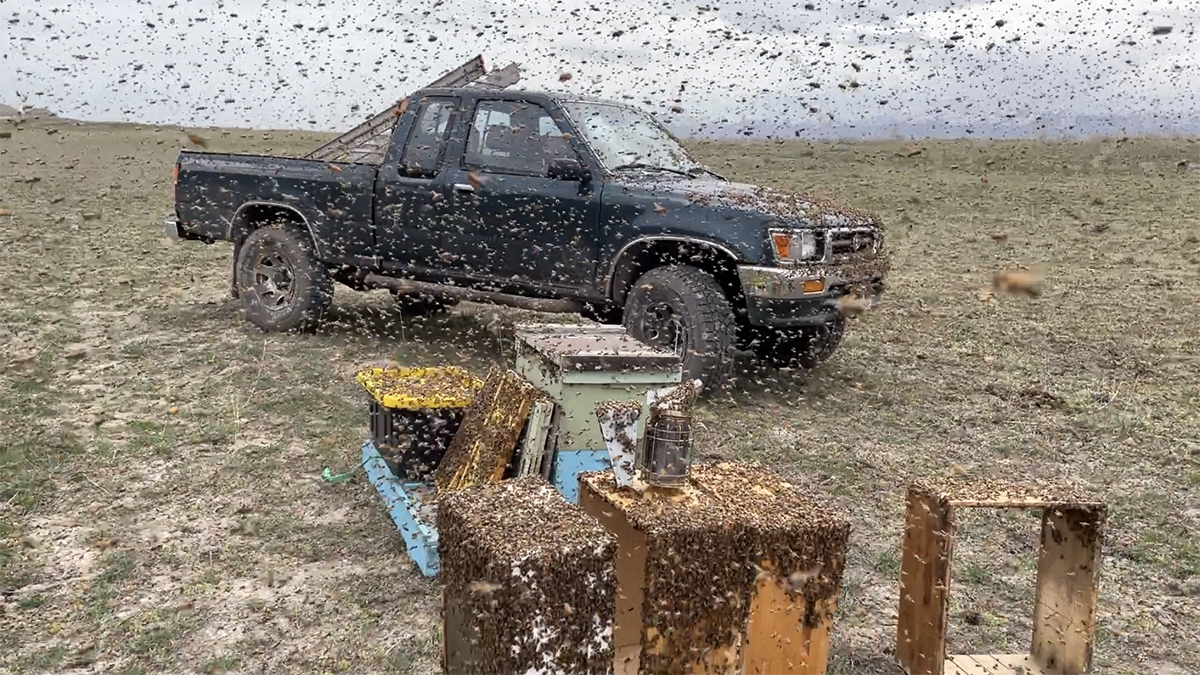
An example of swarming activity.
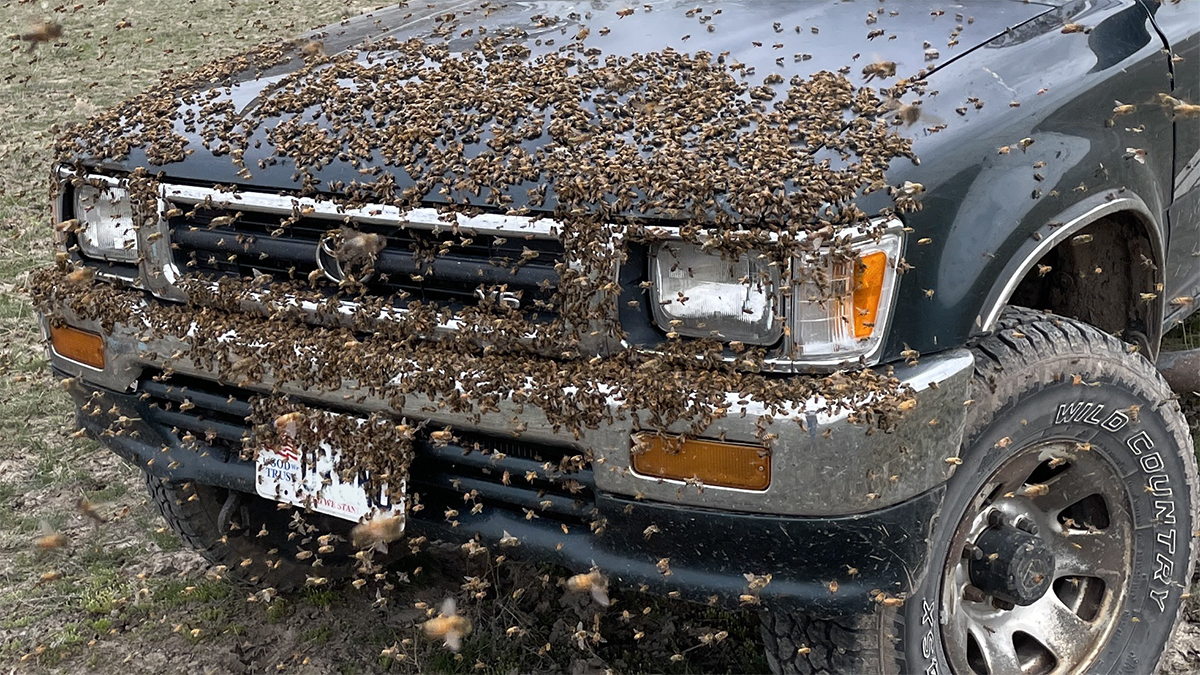
Bees collect on the hood and grill of Harris’ pickup truck.
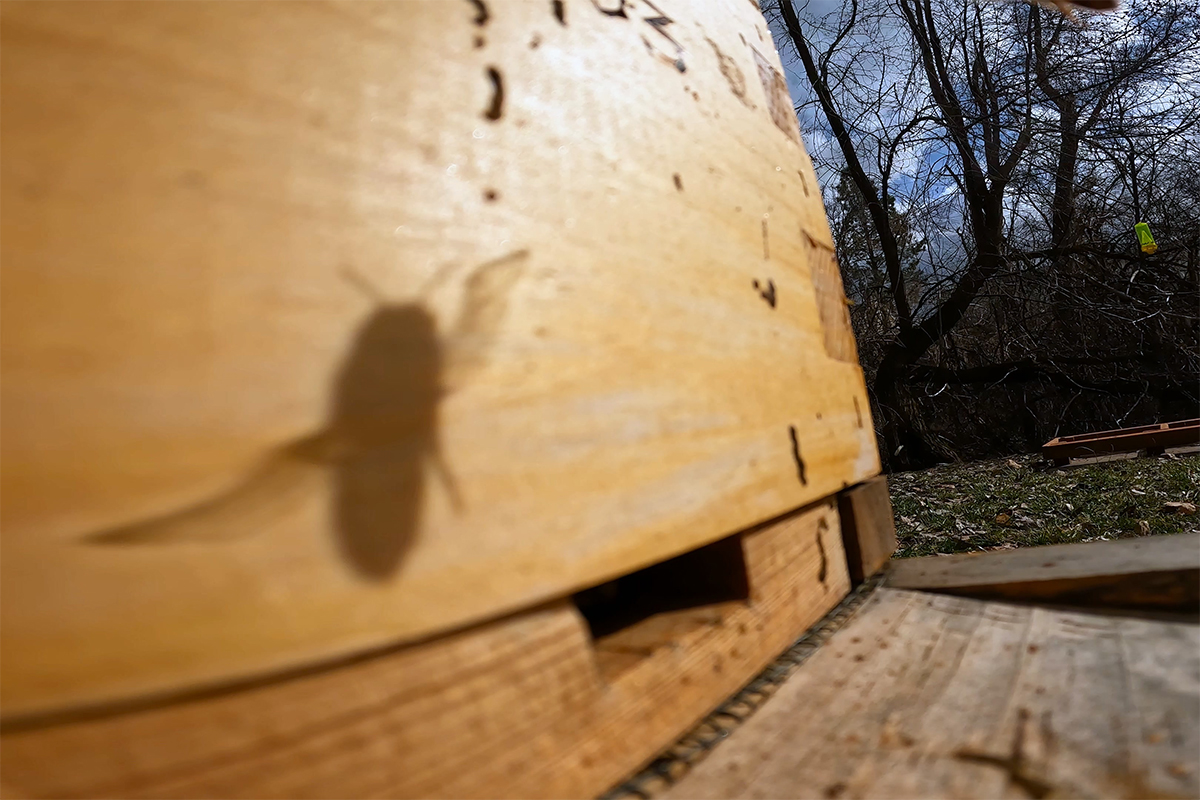
Shadow of a bee on the side of a nesting box.
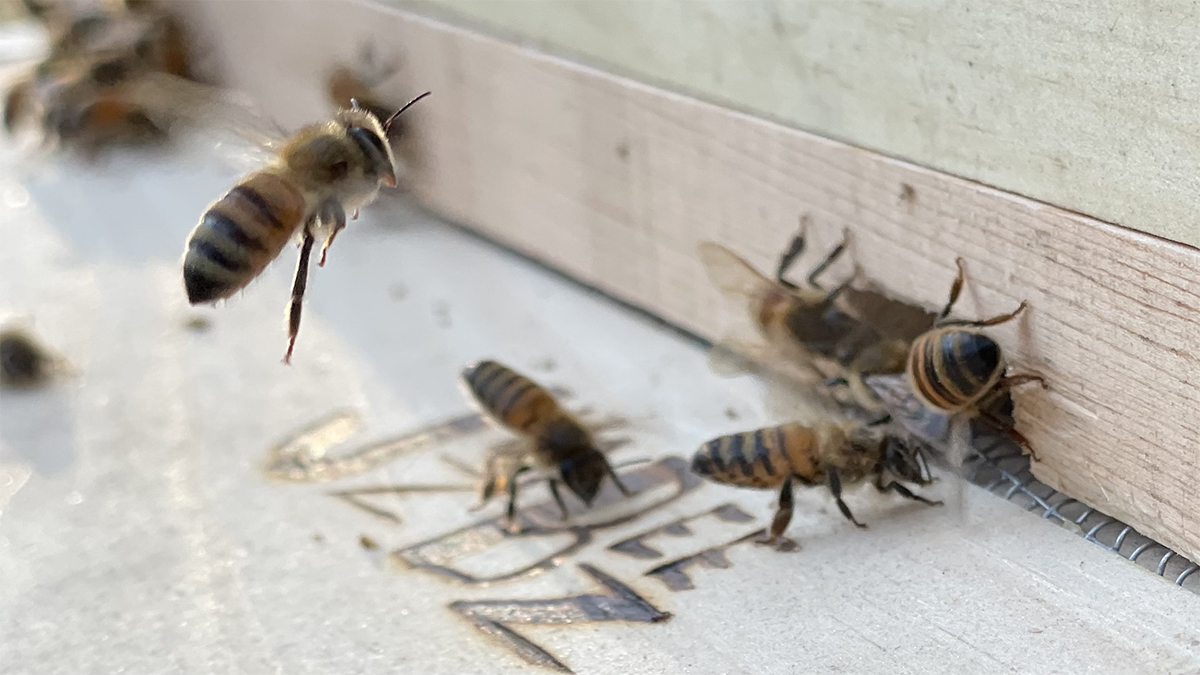
Worker bees, like the ones shown here, gather food and water for their colony, including nectar, pollen, water, and resin.
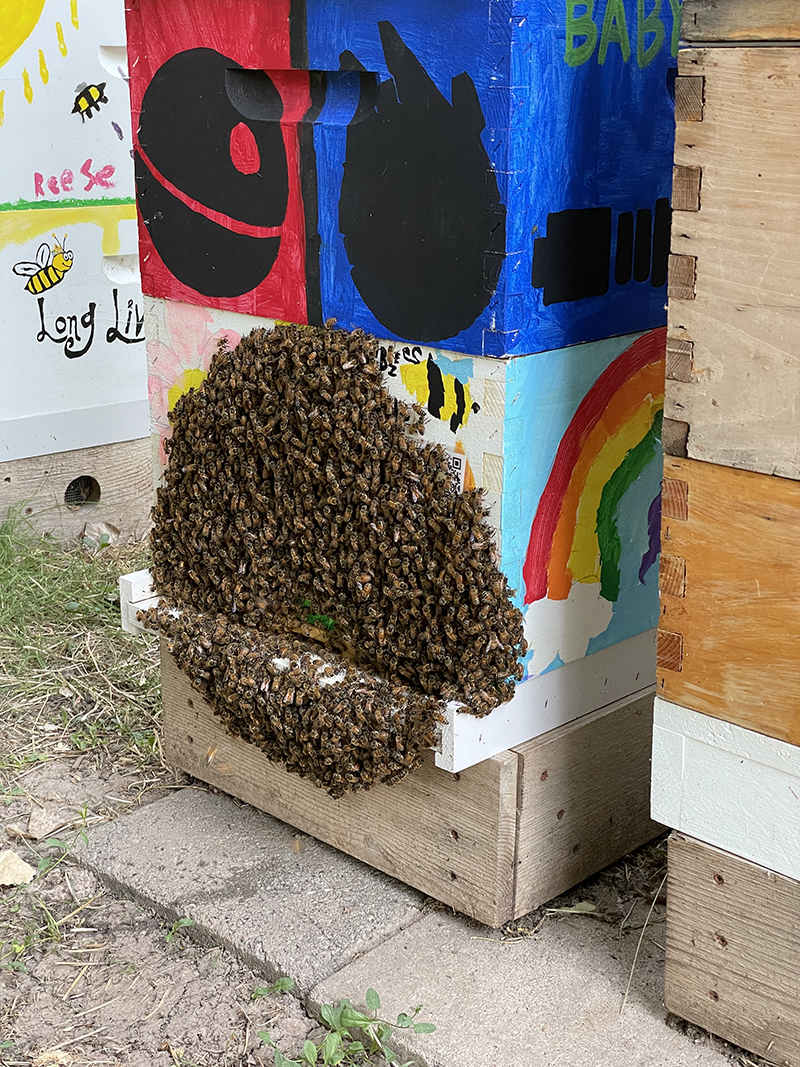
Bees crowd on the side of a nesting box.
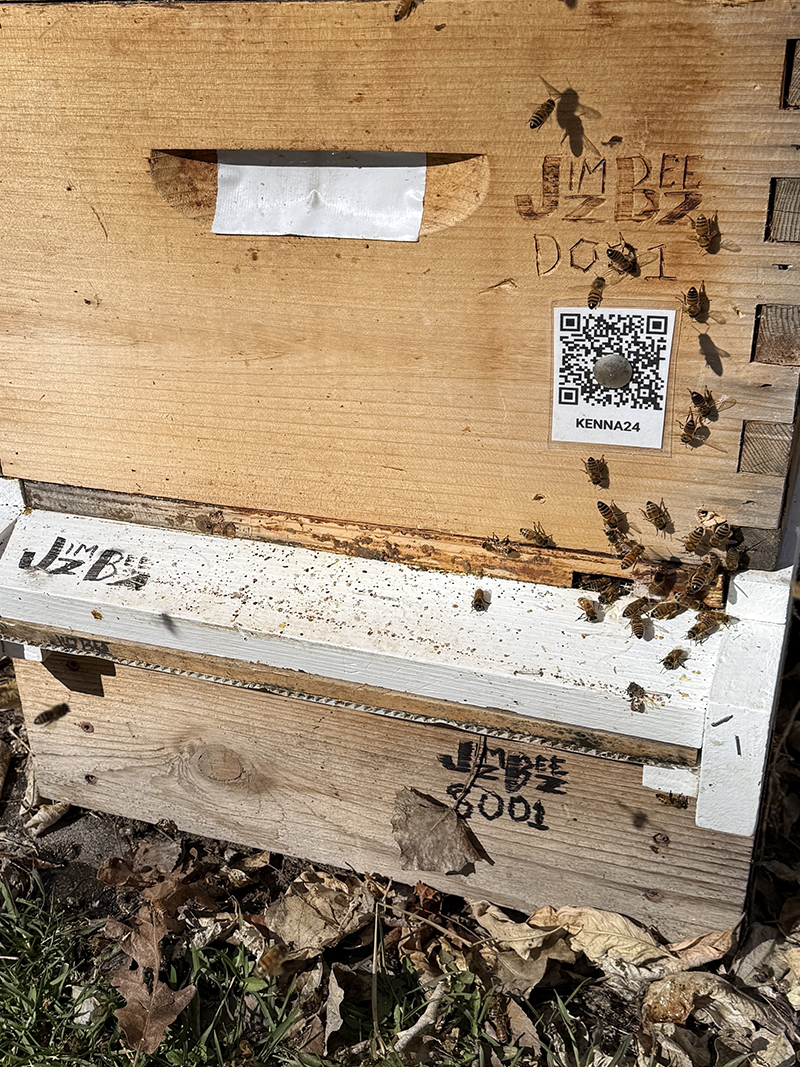
Harris uses QR codes and Trello software to take notes and track the health of queen bees.
Node 4
Our monthly newsletter includes news from UIT and other campus/ University of Utah Health IT organizations, features about UIT employees, IT governance news, and various announcements and updates.
